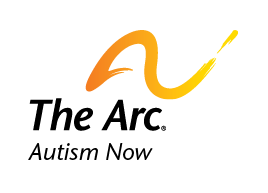Overcoming Obstacles to the Participation of Children and Adults with Autism in Religious Services
March 20, 2012 Prism Newsletter
By Jennifer Sladen
In the United States, over 80 percent of people have religious affiliations. Popular religions practiced in the US include Christianity, Judaism, Buddhism, Islam, and Hinduism. This means that practicing religion is a concern for many children and adults with autism and other developmental disabilities and their families.
However, children and adults with autism and other developmental disabilities and their families may have many challenges when it comes to visiting places of worship and practicing religion. Places of worship and religious practices are often inaccessible to people with autism and other developmental disabilities. Often times, the sensory stimulation of the places of worship themselves (the sights, sounds, closeness of participants, and tastes) can be off-putting to people with autism and developmental disabilities. For instance, the presence of different lighting on stained glass, mosaics, and wood carvings can disorient people with autism during the course of a religious service and cause people to shut down or have a meltdown. Additionally, the rituals and services themselves may be difficult for people with autism and other developmental disabilities to understand because they often involve older and more formal language. This matter is complicated when services change or when people in the place of worship change because routine changes often upset people with autism and developmental disabilities.
With the many challenges that children and adults with autism and other developmental disabilities and their families face when visiting places of worship and practicing their religion, people may choose simply not to participate or encourage the participation in their faith. However, preparing some strategies may help people with autism and other developmental disabilities and their families minimize these challenges.
Preparing Yourself or Your Loved One
Preparations may include:
- making sure to eat and sleep enough that you or your loved one is comfortable during services;
- learning about rituals or your faith by finding materials that explain them in a way you understand or, (if a parent) explaining to your child about rituals or your faith using visuals like photographs or stories, if necessary;
- disclosing to others in your community, including religious leaders in your place of worship, about you or your loved one having autism or another developmental disability, to see if they have resources or accommodations that can be put into place;
- visiting the place of worship beforehand to become familiar with the building or religious leaders in your community;
- bringing materials for yourself or your loved one to work with if you or he/she become bored during the services;
- bringing materials for yourself or your loved one that may help reduce sensory stimulations (i.e. headphones or scents that help you or your loved one feel calm);
- developing prompts for yourself or your loved one to help them remember what to say or how to interact with peers during religious services;
- sitting in areas of the church where you or your loved one are less bothered by lighting, crowding of people, or other sensory stimuli; and/or
- building in breaks for yourself or your loved one during religious services to have some down time if you or your loved one feels stressed.
- Even though you may prepare yourself or your loved one for attending religious services or visiting places of worship, challenges may still occur. However, preparing yourself, your loved one, and other members of your community may help alleviate some of the stress that you or your loved one may feel about this subject.
For more information, visit:
- Faith Inclusion Network
- National Autistic Society – Going to Places of Worship
- Worshiping with a Child with Special Needs
- PathWays.org – Inclusive Congregation Toolkit
Jennifer Sladen is the Program Associate for the Autism NOW Center.
